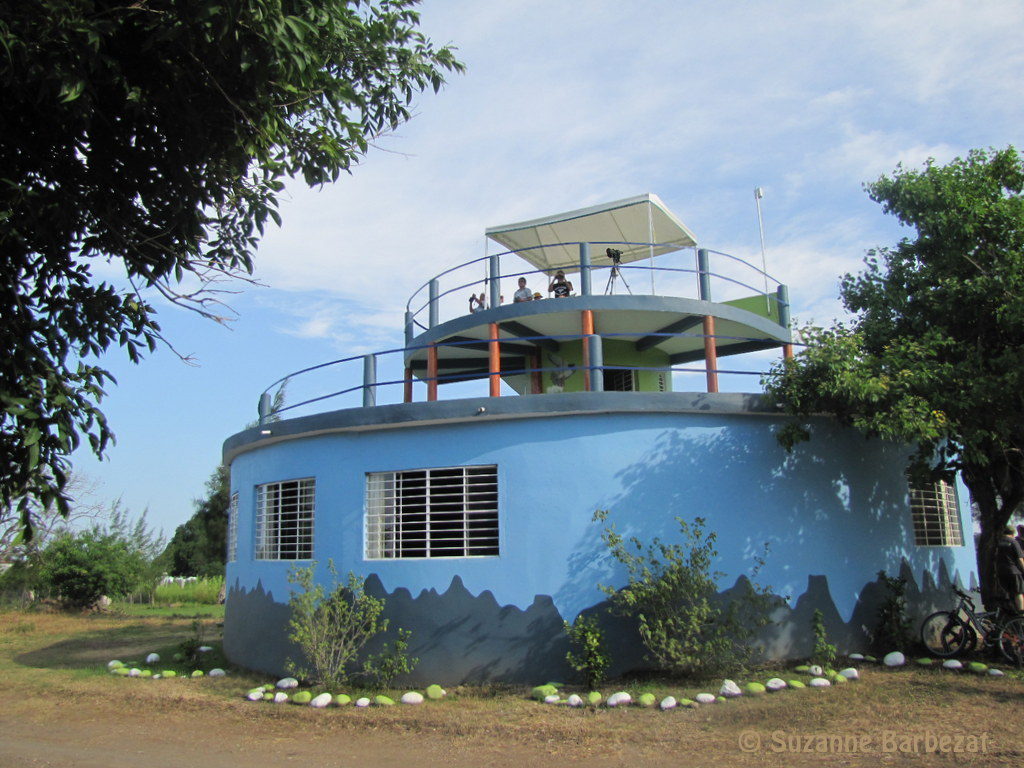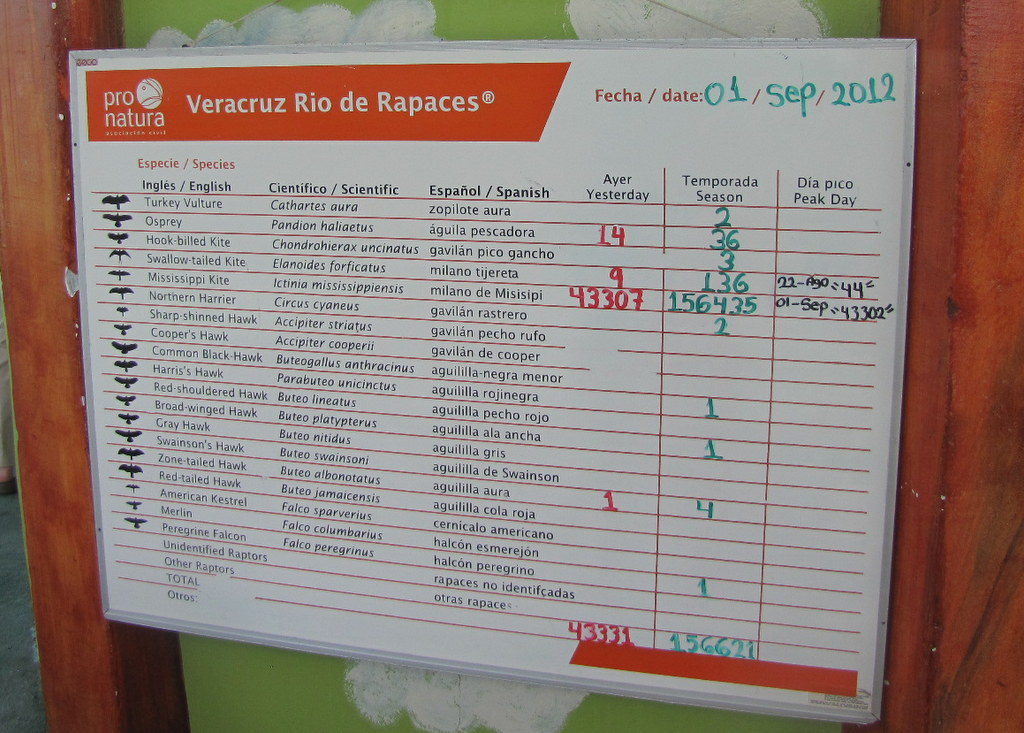We all know of the migrations of the monarch butterflies, the great whales, and the sea turtles, but one of the amazing migrations of the Animal Kingdom that gets much less press is that of the raptors across North America. Millions of birds of prey make their way from Alaska, Canada, and the northern United States down to Mexico, Central and South America each year in the fall, and back again in the spring. One place where you can observe this phenomenon particularly well is in Mexico, in the state of Veracruz. Here, at the peak of migration season, observers can sight over 100,000 birds in a day. The sheer number of birds of prey that pass over this specific area has led it to be called el Río de Rapaces, “the River of Raptors”.

The non-profit organization ProNatura Veracruz has set up two counting stations to monitor the raptors along this major North American migratory route. One station is in Cardel on the roof of the Hotel Bienvenido, and the other is at a Bird Observatory in Chichicaxtle. At these stations, trained counters monitor the populations of various raptor species, so they can keep track of the raptor migration over the long term.
I visited the ProNatura Bird Observatory in Chichicaxtle as part of a fam trip that was held for travel industry professionals and media who were attending ATMEX in September 2012. Adventure Travel Mexico (ATMEX), an adventure travel fair featuring Mexico’s top adventure travel tour operators and destinations, was held at the World Trade Center in Boca del Río, Veracruz from September 5 to 9, 2012. I joined a group who took a three day adventure with Mexico Verde in the days prior to the fair. On our way north to the Mexico Verde adventure resort in Jalcomulco, we stopped in Chichicaxtle to visit the observatory. Unfortunately, we didn’t see many birds that day, since it was a few weeks before the peak migration time. We did learn a lot about the project and the raptor migration, however.

More than 5 million hawks, eagles, falcons and vultures pass through this migration corridor each year on their journey from their breeding areas in the north to their wintering grounds in the south. The birds concentrate in this area because of the topography. Flying south from Texas, they follow the Sierra Madre mountain chain, and then are funneled between the Neovolcanic Axis and the Gulf of Mexico, sticking to the lowlands. Broad-winged Hawks and Turkey Vultures make up the greatest proportion of birds that cross here, but there are also Swainson’s Hawks and Mississippi Kites in great numbers. Other raptors that migrate across Veracruz are the American Kestrel, Sharp-shinned Hawk, Osprey, Cooper’s Hawk and Peregrine Falcon. Besides raptors, there is also a large number of aquatic birds, as well as butterflies and dragonflies who migrate through here.
Interestingly, the ritual ceremony of the Voladores de Papantla, acknowledged by UNESCO as part of the Intangible Cultural Heritage of Humanity, originated in this area. The ceremony consists of five men (called voladores “fliers” or hombres pájaro “bird men”) who climb a very tall pole. Four of them each wind a rope around one of their legs and then launch themselves off the pole. Suspended upside-down, they circle around and down, as the flier who remains above plays a tune on a flute. The circling of the pole mimics the circular flying pattern of the great raptors, who fly in a spiral in solar-heated thermal currents which lift them to higher altitudes, so they can soar farther while expending less energy.

Clearly this migration was considered important in ancient times. Nowadays, keeping track of the numbers of birds that pass through here annually allows conservationists to monitor their well being, and prioritize conservation efforts on critical habitats.
A few days after our visit to the observatory in Chichicaxtle, we were driving back south through the area. When we made a pit stop at a convenience store beside the highway, I happened to look up and see a multitude of raptors flying in a vortex. Our whole group stopped to gaze up at the sky for several minutes. The sheer abundance of wildlife in motion is an amazing phenomenon to witness.
The ProNatura Bird Observatory in Chichicaxtle, Veracruz is open from 10 am to 7 pm every day between August 20th and November 20th. The migration reaches its peak during the last week of September and the first week of October. More information from their website: ProNatura Veracruz




